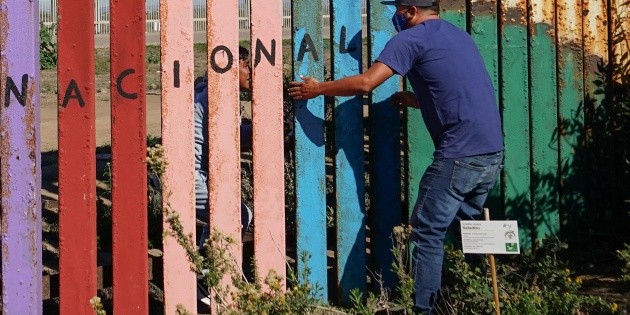The Supreme Court ruled Thursday that the government of Joe Biden you can override an immigration policy of your predecessor Donald Trump that forced asylum seekers to wait in Mexico their hearings in US immigration courts, a decision that is a victory for the White House which in any case must attend to the growing number of people seeking refuge on the southern border of the United States.
The ruling will have few immediate repercussions. because the policy known as “Remain in Mexico” has rarely been applied during the current government, which reinstated her after a court order in December. It was Trump who set it in motion and applied it firmly.
Two conservative justices on the court joined their three liberal colleagues in backing the White House position.
During the government of Trump the program enrolled about 70 thousand people after they launched it in 2019. Biden suspended the policy — formally known as Migrant Protection Protocols (PPM)— since his first day in office in January 2021. But several lower courts ordered it reinstated in response to a lawsuit brought by Republicans from Texas and Missouri.
The dynamic at the border has changed considerably since “Remain in Mexico” was at the core of Trump’s border policies.
Another policy of the Trump administration that remains in force and that Thursday’s ruling did not include allowing the government to quickly expel migrants without giving them a chance to apply for asylum, setting aside US law and an international treaty on the grounds that it is applied to contain the spread of COVID-19. More than two million expulsions have been carried out since this regulation began to be implemented in March 2020, known as Title 42.
In May, a federal judge in Louisiana blocked the Biden administration from suspending Title 42 in a case that could eventually go to the Supreme Court.
The ruling that was revealed
The ruling on the “Remain in Mexico” policy was released the same day the court dealt a severe blow to the Biden administration in a major environmental case around the main law against air pollution in the country. That decision could complicate the government’s plans to combat global warming.
At the heart of the legal dispute in the immigration case was whether federal immigration authorities, with far less detention capacity than necessary, had to send people to Mexico or whether they had the discretion under federal law to leave immigration applicants. asylum in freedom in the United States while they wait to be summoned to their hearings.
After what Biden suspended the program, the Secretary of National Security, Alejandro Mayorkas ended it in June 2021. In October, that department presented additional justifications for the disappearance of the policy, but the courts did not give them the go-ahead.
Chief Justice John Roberts wrote in the majority opinion that the appeals court “erred in ruling that “the federal Immigration and Nationality Act” required that the government continue to implement” the policy decreed by Trump. His conservative colleague Brett Kavanaugh —appointed by Trump— and the three liberal justices of the court were added: Stephen Breyer, Sonia Sotomayor and Elena Kagan.
Kavanaugh wrote separately that in general, when there is insufficient detention capacity, both releasing asylum seekers in the United States and sending them back to Mexico “are legally permissible options under immigration law.”

